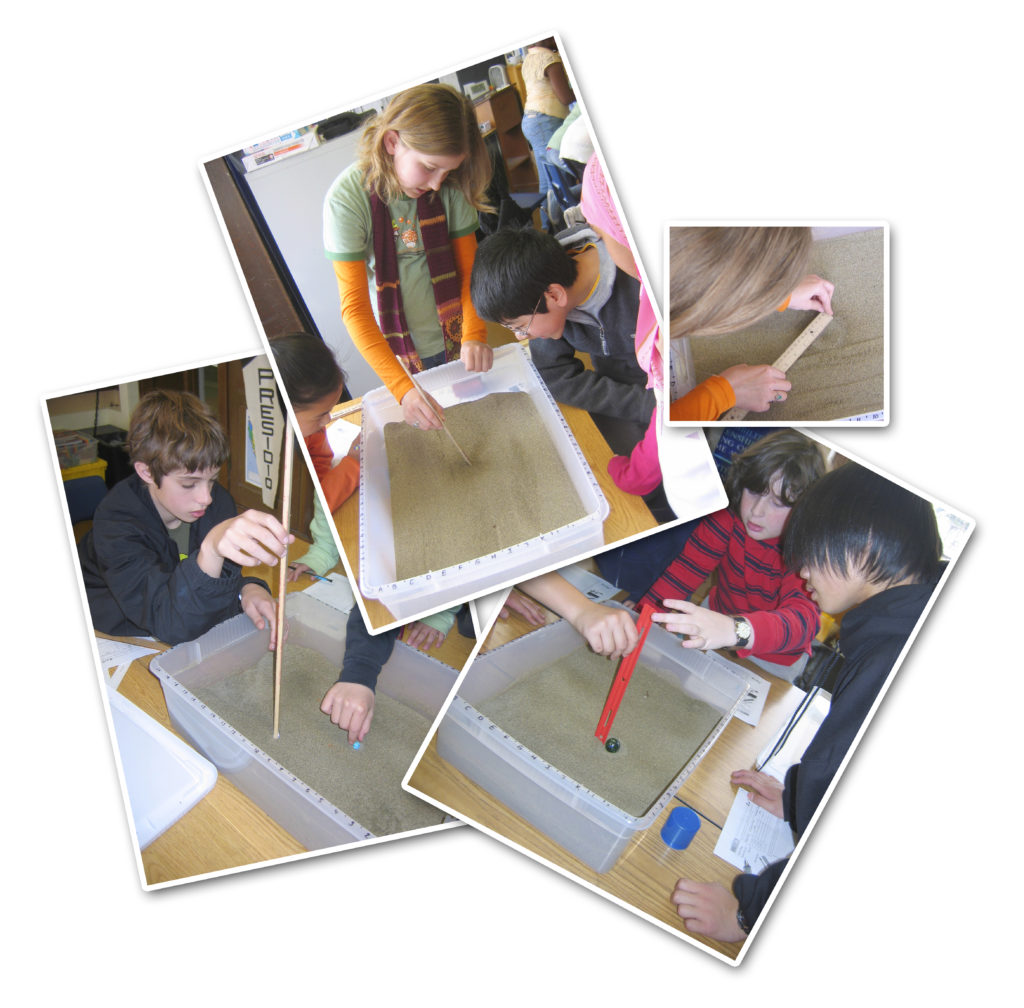Impacts

Supermarket Science Materials are organized into thematically linked sets with experiments and activities as well as background information that makes them easier to do. There are also a bunch of simple, fun art and writing projects. All of the activities can be done alone or in conjunction with other project sets. Choose activities that are developmentally appropriate for your children.
All Supermarket Science Materials are primarily geared toward students in elementary and secondary schools, as well as their parents and teachers, but can be expanded to higher grades. The activities are designed to advance the understanding of concepts of biology, ecology, geology, and sociology based on local resources like a backyard or a local grocery store. All of the materials in this set and others link the Core Curriculum Standards. Use these Standards to focus the activities to a particular grade level.
There are also LEARN, SHOW, USE, DO, and TEACH pages. LEARN pages are designed to be printed out and given to the kids. They contain explanations, stories, or diagrams. SHOW pages usually present interesting photographs or illustrations that demonstrate specific concepts. USE pages are created as supplemental materials for the activities and experiments. Animal Cards and Map Cards are examples of USE pages. And finally, the DO pages contain the actual activities and experiments—please print as many copies as you need and give them to your children. Please use the back of these pages as scrap and add additional pages as needed.
On some pages, there are icons of animals. For example, an activity about elephants might have an elephant icon next to it. These icons can be used as keys to link information between all of the Supermarket Science Materials.
Most DO pages have a What You Need list of items in the margin under the title of the activity. This is a quick reminder for what children should have while doing the activity. It might look something like a list on the right: Animal Stamps pages, Animal Cards pages, research books, pencil, scissors, glue, etc.
Some of the activities use of cards from the Supermarket Science Cards or Stamps USE pages. Creating taxonomies is part of the scientific process. Card games and activities allow kids an opportunity to practice this skill.
No matter what age you are, these activities will be fun and exciting. We all have a surprising amount of misconceptions about gravity and how it works. While these activities don’t really discuss gravity, they provide experiential grounding into how gravity feels and acts under different situations. Kids should be encouraged to test their ideas and experiment with marbles and egg drops.
There is a lot to notice, so please consider doing these multiple times and discussing the results over dinner or as part of a class. And remember, there are as many ways of learning as there are people doing it. We encourage you to come up with other ways of explaining what happens when marbles hit the ground. Consider discussing what would happen if a large meteorite hit a populated area. Look up people who were unlucky-enough to get hit by a meteorite! Think of these activities as inspirational examples, jumping off points.

Main Ideas for Impact Activties
These activities and experiments introduce students to the science of collisions, impacts, and gravity. All of the activities in these pages are doable even by the youngest elementary-aged school children. And the older kids would be able to not only do the activities but theorize on what they are doing. This is truly an experiential set.
Impact Craters
- The size and shape of the impact crater can be predicted based on the size, shape, and speed of the missile and the medium into which it is being dropped. This is top down reasoning—induction!
- We can also look at a crater and make some observations and deductions about how it was made—it’s bottom up reasoning.
- When we do scientific experiments, we want to keep a lot of the conditions the same across the many trials while varying just one variable.
- It’s okay to fail and be wrong—scientists are wrong all the time. It’s part of the scientific process. So keep dropping those eggs until at least one survives. Do the experiments form different heights—science is worth scrambling a few eggs.
When two objects smash into each other, they usually leave evidence of impact. High speed contact between a baseball and a window tends to result in a lot of broken glass. Drop a bowling ball into a sandbox, and sand goes flying out. Do the same with a balloon and... Raindrops leave marks on puddles, even if temporarily.
We can make some predictions on the size, duration, and amount of destruction a particular impact will cause by examining the physical properties of the projectile. And by looking at an impact crater, we can make some guesses as to what kind of object was responsible for this damage.
If you drop a raw egg from a second story window, chances are good that you will make a mess on the pavement. But what could you do to minimize the mess?
10. Barringer Crater, Arizona, USA
9. Lake Bosumtwi Crater, Ghana
8. Mistastin Lake, Labrador, Canada
7. Gosses Bluff, Northern Territory, Australia
6. Clearwater Lakes, Quebec, Canada
5. The Tunguska Explosion, Siberia, Russia
4. Manicouagan Crater, Canada
3. Sudbury Basin, Ontario, Canada
2. Chicxulub Crater, Mexico
1. Vredefort Dome, South Africa
A short video of an ancient meteor crash in the Arizona desert.
